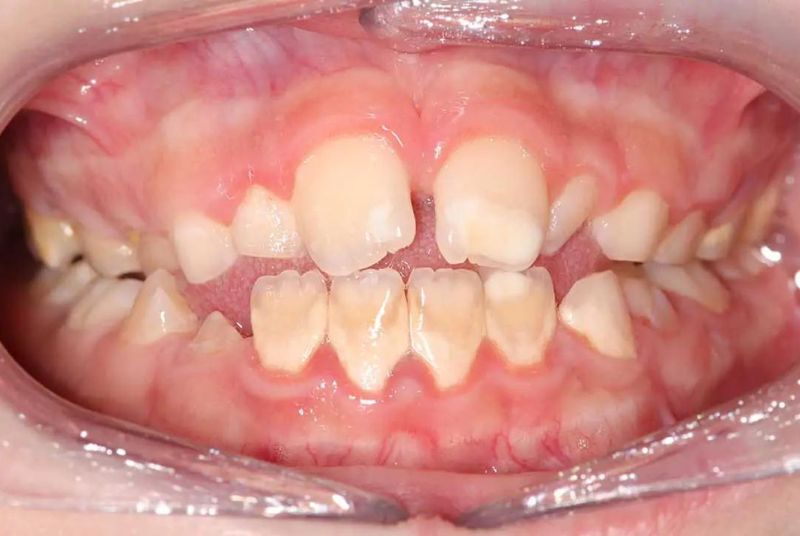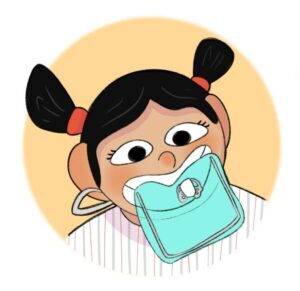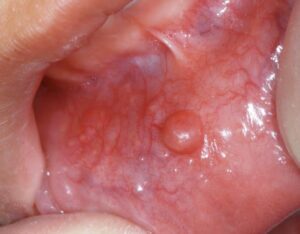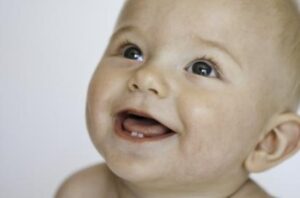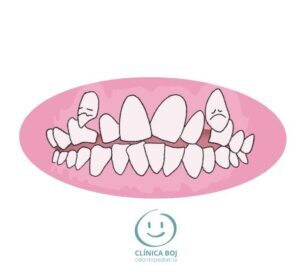What is an openbite in a child: types and treatment
What is an open bite?
An openbite is a type of malocclusion where we find a lack of contact between the upper and lower teeth. This bad bite causes both aesthetic alterations and functional alterations like chewing, phonation and breathing disorders.
Therefore, it is important to determine as soon as possible if the problem is the result of maxillary/mandibular bone growth in chidren or young people, or if it consists just of a dental problem due to poor positioning of the teeth, possibly caused by an unhealthy habit.
Types of open bites
Basically, there are two types of dental open bite, applicable to all age groups:
Anterior open bite:
We find a lack of contact between the upper and lower front teeth (incisors). This open bite malocclusion can be produced by different causes.
Among them, extended pacifier use can cause an open bite in a baby which, if left untreated, can last a lifetime.
Other types of anterior open bites are caused by finger or thumb sucking, lip sucking, tongue thrusting, mouth breathing, or atypical swallowing, among others.
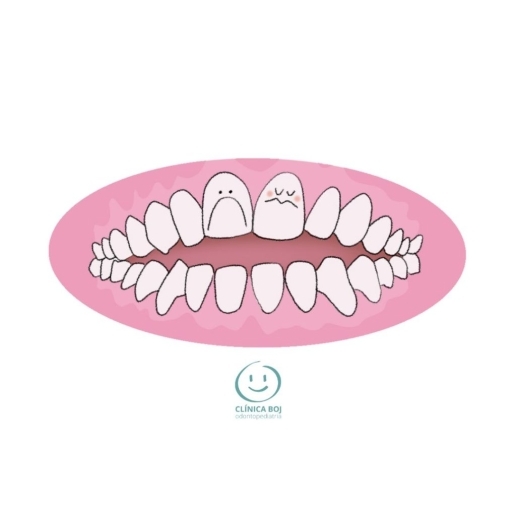
Posterior openbite:
In this case, it presents dental contact between upper and lower teeth in the front but a lack of dental contact in the back teeth (the molars). That is, the bite is open on the back part of the maxillary upper and lower (bones) arches.
Occasionally, the posterior open bite is due to jawbones growth deviations. The most common reason is the presence of harmful habits.
How do you fix an openbite on a toddler?
This problem appears when there is a prolonged (on a daily basis and in long run) use of the pacifier, beyond 12-18 months or even less time if the suction is very intense. For this reason, it is recommended to correct the open bite to remove the pacifier use not later than reaching the first year of age if possible.
Thumbsucking or finger/s sucking can also create an open bite. Usually, this habit is abandoned by children before they reach 4 years of age. If it lasts longer, usually we have to intervene so that the openbite does not worsen too much.
Fortunately, in cases where the pacifier is withdrawn early in babies, the previous open bite usually disappears spontaneously without further complications in a short time (a few months). However, if the use of the pacifier is extended for a longer time, the bad bite (open bite malocclusion) will be harder to solve, and in extreme cases jaw surgery may be needed when they become young adults.
Can open bite be treated without surgery?
To treat open bites in children, as well as with other malocclusions, every case must be studied in detail, carrying out the indicated tests and studies. This way, the final decision on the type of open bite treatment will always be made in agreement with the patient’s family.
In most cases, interceptive orthodontic treatment before the patient has adult teeth, will be needed to treat both the open bite and the habit that has produced this malocclusion.
For this reason, the treatment options chosen will depend on the specific case and could be treated with habit-based interceptive appliances, like tongue cribs, a Bluegrass or a plate especially designed for each case. Tongue cribs can be placed in the mandibular arch or in the maxillary arch. Other appliances used are myofunctional trainers. Appliances can be fixed (Bluegrass, tongue cribs, braces) or removable (Bluegrass, tongue cribs, other removable plates, myofunctional trainers, invisible orthodontics like invisalign).
Fixed versus removable orthodontic appliances
Usually, in most children, fixed appliances work much better and faster since we do not need the child´s cooperation. On the other hand, minor open bites can be treated at a later date when they become adolescents with fixed orthodontics (braces) or with invisible orthodontics (invisalign).
Sometimes, an open bite comes due to oral breathing or other breathing problems, a tongue thrust habit or atypical swallowing. Enlarged tonsils or adenoids can contribute also to get or worsen an openbite.
In these cases, we need interaction with other professionals like speech therapists, pediatricians and otorhinolaryngologists (ORL doctors) to work as a team to decide the best approach for the child. Adenoidectomy, tonsillectomy or tonsil reduction may be needed to improve the way the child breaths. That way children have less risk of getting sleep apnea or improve the apnea if it is already present.
New techniques have facilitated ORL doctors work and benefit the children too. Tonsil reduction with laser surgical machines or with radiofrequency technology.
What is the fastest way to fix an open bite?
We cannot talk about a fastest way since the time to treat and close an open bite will depend, undoubtedly, on the characteristics of each particular case. The age of the child or young person and why this open bite malocclusion occurs, play an important roll on how much time is needed to correct it:
Skeletal open bite
It is caused by a deviation of maxillomandibular growth, that is lower or upper jaw growth. In other words, it is a problem related to the growth of these two facial bones.
Dental open bite
The open bite occurs due to a dental problem and not to a skeletal (bones) problem. It is not an issue of straighten the teeth, but to bring them closer to close the open bite. Finally, it is also more than important to control, to re-educate and to extinguish the habit that has caused this type of poor bite, if it is still active.
For all these reasons, early diagnosis and probably early intervention is essential to avoid the need of more complicated and long treatments in the future. Fortunately, very few will need orthognathic surgery combined with orthodontics when they become young adults.
References:


